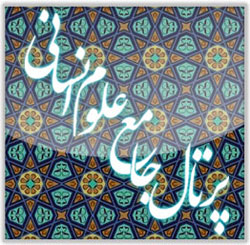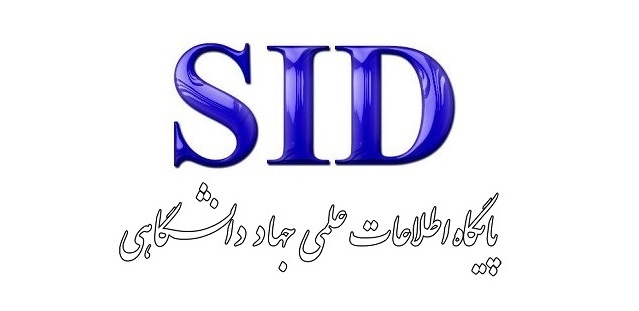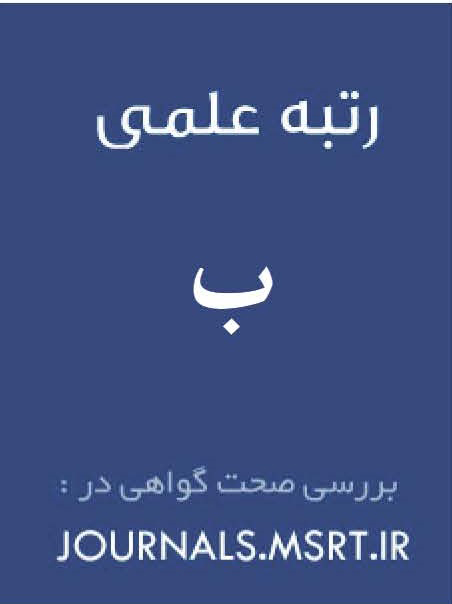Challenges of Developing Cultural Capital from the Perspective of the Qur'an and Hadith
Keywords:
Cultural capital, cultural challenges, Quran and Hadith, Islamic ethicsAbstract
The development and reinforcement of cultural capital in Islamic countries—and the integration of its foundational principles within the framework of modern educational and social systems—entail unique complexities that may be met with various challenges requiring identification and analysis. Accordingly, this study employs a library-based methodology and adopts a descriptive-inferential research approach to qualitatively analyze the content of Qur’anic verses and Hadiths through thematic exegesis. The study identifies these challenges from the viewpoint of the Qur’an and Hadith. The findings indicate that the most significant obstacle to the formation of cultural capital in Islamic societies lies in four domains: epistemological-intellectual (e.g., the suspension of reason and intellectual despotism), ethical-moral (e.g., hypocrisy and disbelief), social (e.g., historical distortion and the promotion of inappropriate models), and theological-doctrinal (e.g., superficial understanding of religion). These challenges not only endanger cultural authenticity but also prevent societies from attaining a civilizational model rooted in divine guidance. However, such challenges can be addressed through Qur’anic and Hadith-based teachings such as strengthening religious knowledge and awareness, fostering social ethics, utilizing divine and educational models, combating cultural monopolization, and ultimately enjoining good and forbidding evil. These strategies are grounded in the principles of piety, justice, and collective responsibility. In contrast to secular approaches, they define culture and cultural capital not as tools for the pursuit of power but as a path toward nearness to God and the realization of a just society.
Downloads
References
Allport, G. W. (1961). Pattern and Growth in Personality. New York, NY: Holt, Rinehart & Winston. https://ia601408.us.archive.org/30/items/in.ernet.dli.2015.199562/2015.199562.Pattern-And-Growth-In-Personality_text.pdf
Bugental, J. F. T. (1965). The Search for Authenticity: An Existential-Analytic Approach to Psychotherapy. New York, NY: Holt, Rinehart & Winston. https://a.co/d/4cz3O4L
Bugental, J. F. T., Schneider, K. J., & Pierson, J. F. (2014). The Handbook of Humanistic Psychology: Theory, Research, and Practice. California: SAGE Publications. https://doi.org/https://doi.org/10.4135/9781483387864
Darabi, J. (2018). Theories of personality psychology (Comparative approach). Tehran: Ayij Publishing.
Deci, E. L., & Ryan, R. M. (1980). Self-determination Theory: When Mind Mediates Behavior. The Journal of Mind and Behavior, 1(1), 33-43. https://www.jstor.org/stable/43852807
Feast, G. J., Roberts, T., & Face, J. (2012). Theories of personality. Tehran: Ravan Publishing.
Frankl, V. E. (1984). Man's Search for Meaning: An Introduction to Logotherapy. California: Touchstone. https://a.co/d/7QFIZ1c
Ibn Manzur, M. b. M. (1993). Lisan al-Arab (Vol. 2). Beirut: Dar al-Sader.
Kamalvand, P., & Mohammad Ali Nejad, R. (2016). Comparative conceptualization of self-esteem in the Quran and humanistic psychology. Journal of Counseling and Psychotherapy Culture, 7(27), 1-32.
Makarem Shirazi, N. (1995). Tafsir-e Namuneh (Vol. 14). Tehran: Dar al-Kutub al-Islamiyyah.
Maslow, A. H. (1968). Toward a psychology of being. New York: Insight Books; D. Van Nostrand Company. https://archive.org/details/towardpsychology1968masl/page/n8/mode/1up
Maslow, A. H. (1987). Motivation and personality. Longman Publishers. https://a.co/d/4FlO206
Maslow, A. H. (1993). The Farther Reaches of Human Nature. Louisiana: Arkana. https://a.co/d/fys7dNN
Miri, S. M. H., & Khademi Afzal, F. (2018). An examination and critique of Abraham Maslow's view on self-actualization with an emphasis on Islamic sources. Journal of Comparative Exegesis Studies, 4(7), 57-78.
Noorbala, A. A. (2011). Mental-social health and strategies for improvement. Iranian Journal of Psychiatry and Clinical Psychology, 17(2), 151-156.
Pourafkari, N. (2003). Comprehensive dictionary of psychology and psychiatry and related fields. Tehran: Contemporary Culture Publishing.
Raghib Isfahani, H. b. M. (1993). Al-Mufradat fi Gharib al-Quran. Damascus, Beirut: Dar al-Qalam.
Rogers, C. R. (1995a). On Becoming a Person: A Therapist's View of Psychotherapy. California: HarperOne. https://a.co/d/cArrBd8
Rogers, C. R. (1995b). A Way of Being. California: HarperOne. https://a.co/d/78G7jj7
Rosenberg, M., & Owen, J. (2020). Self-esteem and its role in resilience. London: Sage Publications.
Schultz, D. P., & Schultz, S. E. (2012). Theories of personality. Tehran: Virayesh Publishing.
Smith, E. R., & Mackie, D. M. (2021). Social psychology. New York: Psychology Press.
Snyder, C. R., & Lopez, S. J. (2014). Positive Psychology: The Scientific and Practical Explorations of Human Strengths. New York: SAGE Publications. https://a.co/d/30RzFhv
Tabatabai, M. H. (1997). Al-Mizan (Vol. 6). Qom: Dar al-Ilm.
Veysi, O., Amiri, M., & Mohammadi, M. (2021). A comparative study of the concept of mental health from the perspective of Islam and modern psychology. Journal of New Advances in Psychology, 4(40), 23-45.
Al-Kulayni, M. b. Y. (1986). Al-Kafi (Vol. 2). Tehran: Dar al-Kutub al-Islamiyyah.
Bahrami, M. (2025). Examining the relationship between religion and culture from the perspective of the Quran. Quranic Research(54 & 55), [No page numbers], Article Special Issue on the Quran and Cultural Engineering.
Bsoul, L. A. (2024). Obstacles to sustainable development in the Islamic world. Invest Journal of Sharia & Economic Law, 4(1), 120-156. https://doi.org/https://doi.org/10.21154/invest.v4i1.8961
Bukhari, M. b. I., & Noor Ahari, A. Sahih al-Bukhari (Vol. 4). Tehran: Sheikh al-Islam Ahmad Jam Publishing.
Chalabi, M. (2003). Sociology of order: Explanation and analysis of social order theory. Tehran: Ney Publishing.
Farhadi, R. H. (2019). Reflections on cultural engineering. Supreme Council of the Cultural Revolution.
Fathi, I., & Dehghanpour Farashah, T. (2020). A comparative study of the concept of cultural capital in Bourdieu's theory and religious teachings. Quarterly Journal of Religion and Cultural Policy, 7(1), 165-212.
Gozali, A. (2023). Multicultural Education in the perspective of the Qur'an and Hadith: Concepts and Implementation. https://doi.org/https://doi.org/10.21070/pedagogia.v13i1.1570
Hasanzadeh, A., & Qasemi, V. (2016). Construction, design, and calibration of a model and provision of instruments for measuring cultural capital. Iranian Sociological Journal, 16(1 & 2), 64-73.
Heydari, M. (2022). Hajj as the cultural capital of the Islamic world. Miqat Hajj Quarterly, 31(122), 7-28.
Ibn Babuyah, M. b. A. (1994). Man la yahduruhu al-faqih. Qom: Islamic Publications Office affiliated with the Society of Teachers of Qom Seminary.
Mahdipur, M. (2008). Cultural capital. Mobalaghin Quarterly(102).
Majlisi, M. B. (1936). Bihar al-Anwar al-Jami'a li-Durar Akhbar al-A'immah al-Athar. Beirut: Dar al-Kutub al-Islamiyyah.
Miri, S. M. (2014). Sources of transcendent culture from the perspective of the Holy Quran. Siraj Munir, 4(12), 36-68.
Mohammadi Ray Shahr, M. (1983). Mizan al-Hikmah (Vol. 3). Qom: Islamic Propagation Office.
Pahlavan, C. (2003). Cultural studies: Discussions on culture and civilization. Tehran: Ghatreh Publishing.
Pourzarayan, N. (2010). An investigation of the economic and cultural status of young families in relation to their cultural and social capital (A case study in Tabriz) Faculty of Social Sciences, Allameh Tabatabai University].
Qasemi, M. A. (2005). Cultural decline in the mirror of the Quran. Ravaq Andisheh(42), 95-117.
Rouhani, H. (2009). An introduction to the theory of cultural capital. Strategic Quarterly, 18(53), 35-37.
Salehi Amiri, S. R. (2007). Cultural concepts and theories. Tehran: Qoqnos Publishing.
Salehi, S. A. (2004). Quranic culture in Islamic Iran. Quranic Research Quarterly(39 & 40), Article Special Issue on the Ten-Year Index.
Surudin, Y. (2024). Pendidikan Karakter dalam Islam Perspektif Al-Qur'an dan Hadits. Religion, Education, and Social Laa Roiba Journal (RESLAJ). https://doi.org/https://doi.org/10.47467/reslaj.v6i5.1250
Tabatabai Borujerdi, H. (1989). Jami' Ahadith al-Shi'a (Vol. 15). Qom: Mehr Publishing.
Taylor, S. E. (1871). Primitive culture: Researches into the Development of Mythology, philosophy, Religion, Language, Art and Custom (Vol. 1). London: John Murray Ltd.
Williams, R. (1983). Keywords. London: Fontana.
Yenshuireh, K., Fontaine, O., & Katbi, M. (2006). Bourdieu's vocabulary. Tehran: Ney Publishing.
Downloads
Published
Submitted
Revised
Accepted
Issue
Section
License
Copyright (c) 2025 Islamic Knowledge and Insight

This work is licensed under a Creative Commons Attribution-NonCommercial 4.0 International License.







